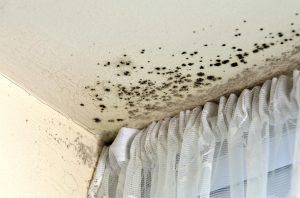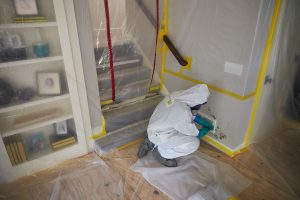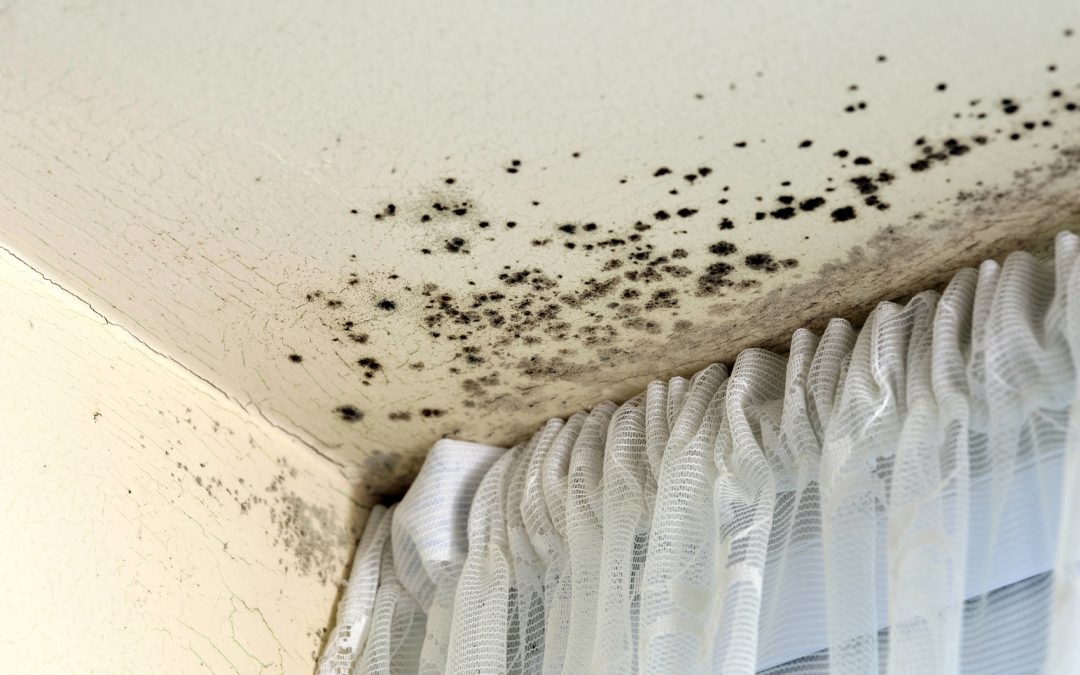Nobody ever thinks of anything good when they see or think of mold. Mold is necessary for the breakdown of organic substances and a natural and necessary part of life, but it is dangerous in our homes. When mold growth does occur, it is a major problem and will often require professionals to address the situation.
Why Mold is a Problem
While it’s natural for mold spores to be present in the air, excess moisture allows them to accumulate within a particular area and feed on nearby building materials. It can grow anywhere in the home, including on carpeting, clothing, walls, ceilings, and all porous materials. In many cases, the mold grows behind walls, especially when there is a leaking pipe or a roof leak.
Mold is often noticed through heightened allergic reactions. When it grows, it disperses spores into the breathing air, searching for a new food source, which also triggers allergic reactions.
The best way to protect your home from mold growth is to control moisture levels. There are many ways to do so, including the following:
- Identify Problem Areas in Your Home

Mold only needs an organic food source – which can be found in common building materials – and moisture to grow.
Your home isn’t mold-proof, but you can take steps to decrease moisture levels in problem areas. First, you need to identify them all, which include:
- Roof leaks
- Leaking pipes behind the wall
- Bathroom walls and floors
- Behind washing machines
- Windowsills
- Kitchen walls near the dishwasher or stove
Preventing the buildup of moisture within these areas is straightforward, but it’s not always easy. Many of these areas can be costly to fix, such as a roof repair or replacing a washing machine. But making these changes now can save a lot of money in mold remediation costs. As soon as you find an area that’s always wet or moisture rich, don’t hesitate to remove the moisture source.
- Dry Wet Areas Right Away
Mold only needs an organic food source – which can be found in common building materials – and moisture to grow. Any wet areas should be dried immediately. Any seepage onto the floor from a heavy rainfall, puddling from a leaking pipe, and even a spill on the bathroom or kitchen floor should be cleaned up right away.
If you have a flood in your basement and still have areas of the floor, walls or ceiling that are wet, place a large fan near the area and run it overnight. If you notice any materials with mold, like clothing or a rug, throw it out right away.
Don’t forget about wet items lying around the home, like bathroom towels or clothes; always make sure the floor is dried after a shower. Clothes left in the washing machine should also be transferred to the dryer right after the cycle or hung up to dry.
- Allow for Proper Ventilation
Many homeowners are unaware of moisture sitting in their home, and they don’t often run fans or keep doors open. So when they cook dinner, take a shower or do a load of laundry, the moisture is left to sit in these rooms, which in turn attracts mold.
To prevent this issue, keep all vents throughout the home open and the HVAC system running on a continuous basis to air out the rooms. Also, make sure that vent appliances push moisture outside, not just into the attic.
Dehumidifiers are also great at eliminating moisture, especially in humid conditions. But they should be checked periodically to make sure they aren’t producing moisture themselves. Read the manufacturer’s instructions for details on how to clean them properly.
Finally, open the windows to allow fresh, dry air to flow inside, provided it’s not humid outside. Keep this in mind especially when cooking, washing dishes, or showering.
- Use Mold-Resistant Building Materials
If you’re building a new home, remodeling or renovating, use mold-resistant products like mold-resistant drywall or Sheetrock as well as mold inhibiting paints.
Mold-resistant drywall doesn’t have paper and its gypsum core is covered in a water-resistant fiberglass. These building materials are especially helpful in laundry rooms, basements, bathrooms, and kitchens, where the risk of mold growth is at its highest.
You can also buy mold-resistant gypsum board, where the core of the drywall prevents moisture absorption and mold growth.

Mold remediation technicians like ServiceMaster S&R Systems will remove mold growth using professional products and equipment.
- Clean and Repair Roof Gutters
One of the common causes of mold is roof leaks due to full and/or damaged gutters. Make sure to have them cleaned at least once each year and inspected for damage. Make repairs as needed and keep an eye out for water stains in the ceiling as they are indicators of roof leaks.
- Direct Water Away from the Home
All home foundations should sit on a slope to allow water to flow away from the foundation and not towards the basement. Otherwise, groundwater will seep into the foundation and cause basement leaks and flooding.
- Prevent Mold from Growing on Plants
Household plants make great decorations, but mold loves moisture-rich soil. If left to sit, it can spread to other areas.
Thankfully you don’t have to get rid of your plants if they have mold; simply add a bit of Taheebo tea to the water given to the plants. The oil of the Taheebo tree is strong enough to resist fungi in rain forests which can keep mold from growing on the plant soil. The product can be found at local natural grocery stores.
Professional Mold Remediation
There are many ways to prevent mold from growing in your home, but due to the number of potential sources, it is still difficult to ensure it won’t grow. Whether it’s from forgetting to open a vent or turning on the fan or dehumidifier after a shower, there are many things that can cause mold to appear.
But this doesn’t mean the issue should be treated lightly. Only professional products are strong enough to remove it at the source because they can remove all spores from the affected area. Household cleaning agents tend to leave some behind, which leads to the fungus growing back in the same spot.
Mold remediation technicians like ServiceMaster S&R Systems will remove mold growth using professional products and equipment. We will also repair the moisture source and advise on how to keep the affected area dry in the future.
Contact Us
Don’t hesitate to give us a call at 630-896-0030 for a free estimate on professional mold removal services in the Aurora, Naperville, Joliet, & surrounding Illinois areas.

